Died 2500 BC Children Userkaf, Bunefer | Father Menkaure Parents Menkaure | |
 | ||
Reign 6 to 8 years starting ca. 2510 BC (4th Dynasty) Monuments Completion of the temple complex of Menkaure's pyramid Place of burial Mastabat al-Fir’aun, Egypt Similar | ||
Shepseskaf was the sixth and last pharaoh of the Fourth dynasty of Egypt during the Old Kingdom. He reigned 6 to 8 years starting circa 2510 BC. The only activities firmly datable to his reign are the completion of the temple complex of the Pyramid of Menkaure and the construction of its own mastaba tomb at South Saqqara, the Mastabet el-Fara'un, "stone bench of the pharaoh”.
Contents
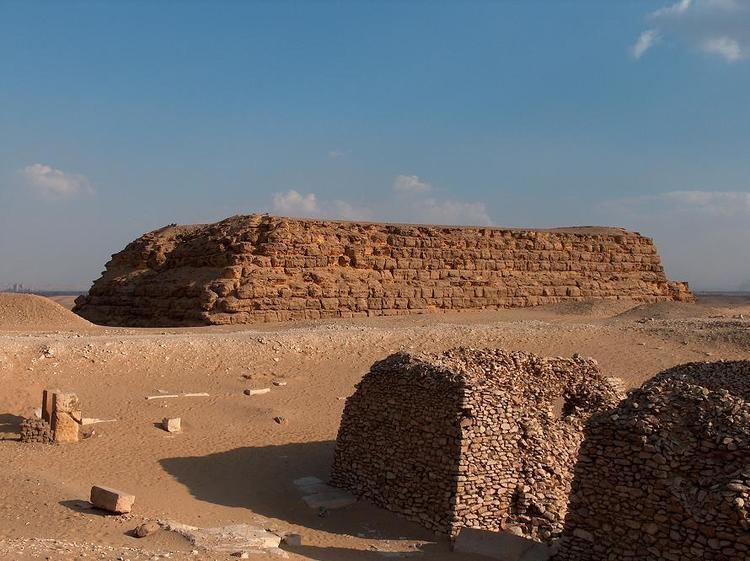
Family
Shepseskaf's family is uncertain. Egyptologist George Andrew Reisner proposed that Shepseskaf was Menkaure's son based on a decree mentioning that Shepseskaf completed Menkaure's mortuary temple. This however cannot be considered a solid proof of filiation since the decree does not describe the relationship between these two kings. Furthermore, the completion of the tomb of a deceased pharaoh by his successor does not necessarily depend on a direct father/son relation between the two.
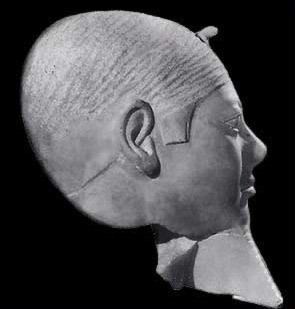
The mother, wives and children of Shepseskaf are unknown. If Menkaure was indeed his father, his mother could have been one of Menkaure's royal wives Khamerernebty II or Rekhetre. It's possible that Shepseskaf's wife was Khentkaus I, but this is far from certain. Queen Bunefer has been suggested as a possible wife of Shepseskaf based on the titles as a priestess of Shepseskhaf. She may however have been a daughter who served as a priestess in the cult for her father. Finally, Khamaat, the wife of a nobleman named Ptahshepses and daughter of a king, may be a daughter of Shepseskaf or Userkaf.
Reign
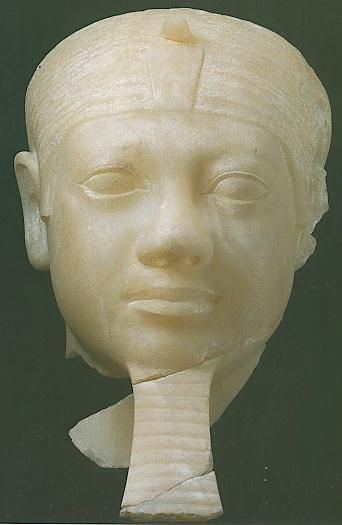
He was likely the last Egyptian Pharaoh of the Fourth dynasty if he was not succeeded by a certain unknown ruler named Djedefptah as recorded in some Egyptian literature and, indirectly, by the Turin Canon. No ruler named Djedefptah is recorded in contemporary documents such as royal monuments or private tombs in the Old Kingdom cemeteries of Giza and Saqqara which date to this period. Palace officials who served in the interval between the 4th and 5th dynasties of Egypt such as the long-lived palace courtier Netry-nesut-pu explicitly lists this sequence of Old Kingdom kings he served under in his tomb: Radjedef → Khafre → Menkaure → Shepseskaf, and the first three 5th dynasty kings namely Userkaf, Sahure and Neferirkare. Finally,
Attestation
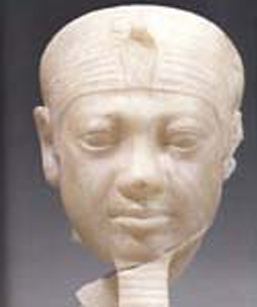
Shepseskaf's reign is attested through the funerary inscriptions made by the officials who served him. These are mostly found in Gizah and Saqqara. The fact that many of these inscriptions only mention Shepseskaf without further details hints at the short duration of his reign. The court officials who mentioned Shepseskaf are :
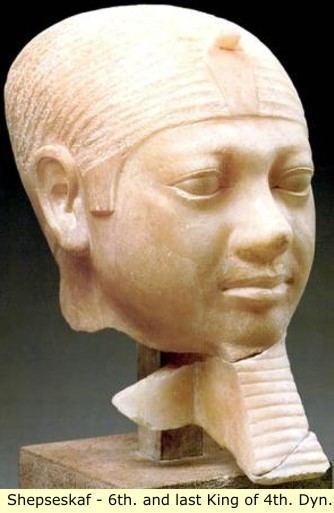
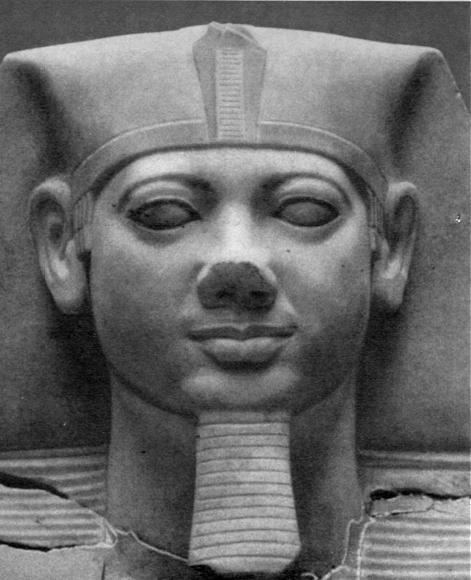
Other than these scanty references to Shepseskaf's reign, the only stele known today that is firmly datable to that period was uncovered in Menkaure's pyramid complex. It mentions a royal decree by Shepseskaf where he makes donations in favor of his father's mortuary cult.
Reign Length
The Turin Canon ascribes Shepseskaf a rule of four years and his anonymous 4th dynasty successor—presumably a reference to Djedefptah—a reign of two years. In contrast, Manetho's King List explicitly gives Shepseskaf a reign of seven years which may be a combination of the 4 + 2 (= 6) full year figures noted in the Turin Kinglist for the last two kings of the Fourth Dynasty plus a significant monthly fraction. Manetho's King List does, however, also note the existence of the unknown and possibly fictitious ruler Djedefptah—called Thampthis in his records—who is ascribed a reign of nine years.
The Palermo stone describes the first year of Shepseskaf's reign. Shepseskaf is confirmed as the immediate successor of Menkaure and was apparently crowned on the eleventh day of the fourth month. Analyses of the space available between the beginning of his reign and that of his successor indicate that Shepseskaf did not reign more than 7 years. Finally, the Palermo stone indicates that the emplacement and name of Shepseskaf's tomb were chosen during his first year on the throne. The name of the tomb is written with the determinative of a pyramid.
Burial
Shepseskaf's tomb is a great mastaba at Saqqara, which was originally called Shepseskaf is purified and is now known as mastabat Fara'un. This mastaba was first recognized as such by Richard Lepsius in the mid 19th century and was first excavated in 1858 by Auguste Mariette. However it was not before the years 1924-1925 that the mastaba was thoroughly explored by Gustave Jéquier. The mastaba was initially thought to be the tomb of the 5th dynasty king Unas, but Jéquier discovered evidence that it belonged to Shepseskaf. In particular, he uncovered a Middle Kingdom stele indicating that Shepseskaf mortuary cult was still active onsite during this time period.
In building himself a mastaba, Shepseskaf broke with the Fourth Dynasty tradition of constructing large pyramids. Indeed, his predecessors built 2 pyramids of Giza and one in Abu-Rawash; while Sneferu, the founder of the fourth dynasty, alone constructed three pyramids in his reign most notably, the Bent Pyramid and the Red Pyramid. It is not clear why Shepseskaf did not start a pyramid for himself and several theories have been put forth to explain this choice:
